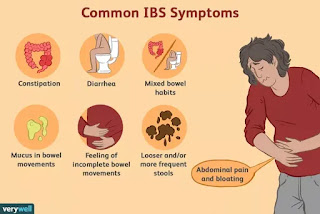Cirrhosis of the Liver
by Laura Kowalk Rogge RN, BSN & Carlyn Husbands RN, BSN
Cirrhosis of the
liver is a disease in which the hepatic cells become damaged and scarred. The
two most common causes are excessive alcohol use and viral infections of the
liver such as hepatitis. Other causes can be autoimmune disorders, disorders of
the bile duct and obesity, uncontrolled hyperlipidemia and diabetes.
The liver
has a few very important functions: 1) metabolizes, 2) detoxifies, 3) stores
and 4) produces. An interruption is any of these hepatic functions can cause
the cells in the liver to die and become fibrous, leading to irreversible liver
damage called cirrhosis. In addition, this fibrous scar tissue interferes with
the blood flow of the liver resulting in portal hypertension. Portal
hypertension is a serious complication of cirrhosis that can lead to
splenomegaly and bleeding varices within the stomach, esophagus and/or rectum
which can be potentially fatal.
During metabolism the
liver will break down waste products and convert them into something that the
body can use. An example of this is when the body metabolizes ammonia into
urea. Ammonia, a by-product of protein metabolism, will go to the liver to be
metabolized and is converted into urea which is then excreted via the kidneys
as urine. In cirrhosis, the liver will be unable to convert the ammonia into
urea leading to dangerous levels of elevated ammonia causing toxic hepatic
encephalopathy.
The liver is responsible
for detoxifying all substances we ingest, such as alcohol and medications,
deciding what can pass through safely into our bloodstream and throughout our
body. It does this with the help of the Kupffer cells.
Glycogen is an
accumulation of glucose and is stored in the liver. When the body has an excess
of glucose such as from eating a heavy meal, it will store all this extra
glucose as glycogen. When the body requires energy, it will tap into this
storage of glycogen and convert it to glucose for the body to use as energy. In
cirrhosis, both of these storage functions can be impaired causing
hyperglycemia when the liver is unable to take in and store the excess glucose.
Hypoglycemia will occur when the liver is unable to convert the glycogen back to
glucose when the body requires it. The liver also stores the vitamins A, C, E,
D, K, B12 and iron. In cirrhosis, the liver is unable to absorb these necessary
vitamins.
Albumin, bile and
coagulation factors are produced in the liver. Albumin is a necessary protein
in that is attracts fluids and drugs and brings them into the vascular system.
It also is bound to calcium and is important for bones. Bile is the substance
that transports old red blood cells (bilirubin) to the spleen, and also
transports cholesterol, flushing it out of our body via the stool. Coagulation
factors such as PT, PTT, INR are produced in the liver and are responsible for
the clotting of our blood.
When in the early-stages, cirrhosis symptoms can often go undetected. Frequently, cirrhosis is first
discovered via routine blood work. To help substantiate the Dianosis, both lab and
imaging tests are done. Liver function tests include enzymes that are found in
the liver ALT AST ALP and bilirubin. Coagulation tests PT, and hepatitis
antibodies are also used. An ultrasound, Ct, or MRI of
abdomen may also be done.
Treatment for cirrhosis varies according to the cause and extent of the liver damage. The goals of treatment are to slow the
progression of scarring by prevention or
treating symptoms and problems cause by cirrhosis.
• Weight loss. People with cirrhosis caused by nonalcoholic fatty
liver disease could become healthier if they lose weight and control their
blood sugar levels.
• Medications may limit further damage to liver
cells caused by hepatitis B or C via specific Tx. of the viruses.
Staff, M. C. (2018, December 07). Cirrhosis. Retrieved from mayoclinic.org: https://www.mayoclinic.org/diseases-conditions/cirrhosis/symptoms-causes/syc-20351487
Edited by Shirley Comer DNP, RN, JD, CNE, ACNS-BC, APN






